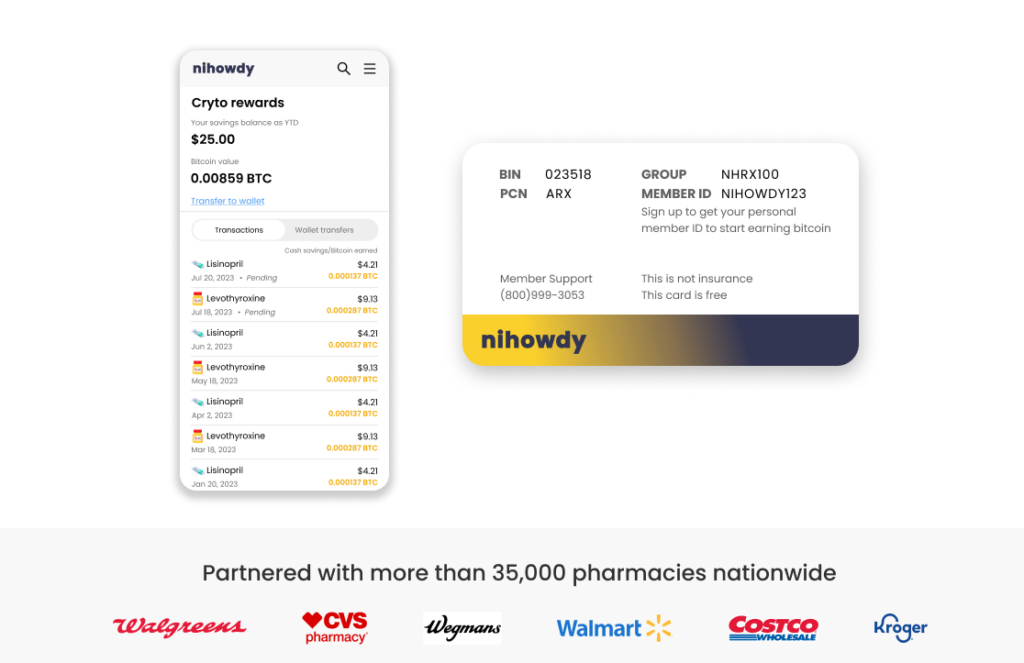Is Lexapro Good for Anxiety? Weighing the Benefits Against the Side Effects

Struggling with anxiety and considering Lexapro for relief? Understandably, you want to know if it’s effective and “is Lexapro good for anxiety?” Lexapro, also known as escitalopram, is a widely used SSRI designed to enhance serotonin levels and help manage anxiety symptoms. This article offers an in-depth look at Lexapro’s use in treating anxiety, provides real-world insights into its effectiveness, and highlights important considerations regarding side effects without presuming a one-size-fits-all answer.
Key Takeaways
- Lexapro, an SSRI, is prescribed for anxiety by increasing serotonin to enhance mood and reduce symptoms, with effects possibly taking six to eight weeks to fully manifest.
- While Lexapro is generally well-tolerated with manageable side effects, serious adverse reactions should be addressed immediately, and a healthcare provider should be consulted for dosage adjustments and potential interactions.
- The cost of Lexapro can be a financial burden, but prescription discount cards and rewards programs like Nihowdy’s can offer significant savings and even cash back in Bitcoin.
Understanding Anxiety and Lexapro’s Role
Anxiety disorders go beyond transient feelings of nervousness or concern that everyone experiences. Individuals with an anxiety disorder deal with unceasing overthinking, difficulty making decisions, and physical issues such as exhaustion and muscle tightness. In young individuals, signs of anxiety often include persistent stomach pain and undue worry about their performance and personal safety.
For people facing relentless anxiety challenges, Lexapro can be a beacon of hope. As a common SSRI medication, it’s utilized to treat conditions like generalized anxiety disorder (GAD) and panic disorder by boosting serotonin levels in the brain – this neurotransmitter plays a crucial role in mood regulation. Consequently, increasing serotonin is key for improving overall mood states while alleviating symptoms of anxiety through Lexapro therapy.
Defining Anxiety Disorders

Anxiety disorders manifest in various forms, each with unique characteristics. Generalized Anxiety Disorder (GAD) is typified by persistent and excessive worries that are difficult to control and lead to significant distress or impairment in social, occupational, or other important areas of functioning. Social Anxiety Disorder is marked by a profound fear and evasion of social interactions.
Specific Phobias involve a severe fear response towards particular objects or situations. Panic Disorder involves frequent panic attacks—sudden surges of overwhelming apprehension or discomfort.
These distinct anxiety disorder variants can profoundly affect an individual’s daily life and overall well-being.
All these mental health disorders share a central theme: the sensation of perpetual unease paired with an overarching dread feeling. This includes conditions such as obsessive compulsive disorder and post traumatic stress disorder, which also fall under the broad umbrella of anxiety-related issues.
Lexapro’s Mechanism of Action
Lexapro, a selective serotonin reuptake inhibitor (SSRI), functions by elevating the amount of serotonin in the brain. This neurotransmitter plays an essential role in regulating mood. Through enhancing serotonin levels, Lexapro effectively alleviates anxiety symptoms and restores tranquility and command for individuals struggling with anxiety disorders. Being part of the group known as selective serotonin reuptake inhibitors, Lexapro stands out as a commonly selected treatment option for such conditions.
Evaluating Lexapro’s Effectiveness for Anxiety Relief

Lexapro is commonly recognized as a reliable and potent solution for treating anxiety. It stands out as the primary option when addressing depression, showing comparable efficacy to other SSRIs in managing major depressive disorder with concurrent anxiety symptoms. Studies suggest that it can take about six to eight weeks before the complete benefits of Lexapro on easing anxiety are fully observable.
Embarking on treatment with Lexapro necessitates a patient approach, underlining the importance of giving time for its therapeutic effects to manifest.
From Prescribed Lexapro to Anxiety Relief
The journey toward alleviating anxiety with Lexapro can be gradual but consistent. Within the first two to four weeks of initiating treatment, individuals often begin to experience a reduction in their anxiety symptoms. It may take as long as six weeks for some people to notice an improvement. Improvements in sleep quality, energy levels, and appetite are commonly reported by patients within the initial two-week period.
Patients are advised to adhere consistently to their prescribed regimen of taking Lexapro and maintain open communication with a healthcare provider prior to altering any aspect of their medication routine.
Comparing Lexapro with Other Anxiety Medications
Numerous anxiety medications exist, and SSRIs such as Lexapro tend to be accepted by the body with relative ease. These drugs have shown effectiveness in alleviating symptoms associated with anxiety. The drug Lexapro is known generically as escitalopram. It forms part of the SSRI category—medications distinguished by their unique active components, indications for use, and potential side effects.
Consulting a healthcare provider is crucial when considering if Lexapro suits your medical needs.
Side Effects: What to Expect When Taking Lexapro
Starting a medication like Lexapro can be worrying because of the possibility of side effects. The typical side effects from taking Lexapro are usually minor and short-lived. You might experience common issues such as excessive sweating, discomfort in your joints, or a dry mouth.
Being cognizant of these potential side effects is important so you can observe any changes in your body’s reaction to the drug. This includes being vigilant about unusual or allergic reactions, which should prompt communication with your healthcare provider for guidance and management.
Common Side Effects of Lexapro
Individuals starting on Lexapro may experience a variety of side effects as their body adjusts to the medication. It’s typical for patients to feel heightened anxiety and jitteriness initially, but these reactions often subside within two weeks’ time. The commonly reported adverse effects are:
- Queasiness
- Migraines
- Xerostomia (dry mouth)
- Excessive perspiration
- Sleep disturbances
- Lethargy
- Exhaustion
- Loose stools
- Acid reflux
- Reduced hunger
To mitigate early onset side effects like jitteriness, it is advised that one begins with a lower dosage of Lexapro.
Addressing Serious Side Effects
Should you encounter any severe side effects from Lexapro, it is critical to seek medical attention without delay. Serious symptoms necessitating immediate intervention include:
- disorientation
- convulsions
- vision alterations
- arrhythmia
- breathing issues
In the event that these adverse reactions occur, promptly contacting a healthcare provider is imperative.
Managing Lexapro Dosage and Treatment Duration
It is crucial to establish the appropriate lexapro dosage to ensure maximum treatment effectiveness and minimize side effects. Typically, healthcare professionals initiate lexapro therapy at a daily dose of 10 mg for anxiety. They will tailor this dosage based on factors such as your personal health history, family history of mental health conditions, present symptoms you’re experiencing, along with any other medications or supplements that are currently part of your regimen.
These professionals provide recommendations regarding the optimal length of time for taking Lexapro in treating anxiety. Usually suggesting a course ranging from six months up to one year as standard practice.
Starting Lexapro: Finding the Right Dosage
When initiating Lexapro for anxiety treatment, the common initial dosage is usually either 5 mg or 10 mg taken once every day. The dose may be modified based on the patient’s reaction to the drug in order to effectively control anxiety while also reducing side effects. To achieve this balance, methods like introducing an extra medication such as a benzodiazepine or cautiously escalating the dosage are often employed.
The Long-Term Approach: How Long to Stay on Lexapro
It is essential to maintain the course of Lexapro treatment even after remission has been achieved in order to preserve the efficacy of the therapy and minimize chances of a setback. Persisting with Lexapro for at least 12 months following remission is advised.
Adopting a long-term perspective towards managing one’s condition with Lexapro is vital for successful treatment outcomes.
Interactions and Precautions When Using Lexapro
Before initiating treatment with Lexapro, it’s crucial to have a thorough conversation with your healthcare provider. This talk should encompass:
- An examination of your personal health history
- An exploration of the medical histories within your family
- A scrutiny of any medications you are presently taking
- An assessment of the symptoms you’re experiencing
Armed with this information, your healthcare provider will be in a better position to determine whether Lexapro is the appropriate choice for managing your anxiety.
Drug Interactions and Lexapro
It’s important to be aware that interactions between Lexapro and various other substances, such as over-the-counter medications and dietary supplements, can change how the drug works or increase its side effects. Specifically, taking escitalopram in conjunction with monoamine oxidase inhibitors (MAOIs), pimozide, or within a two-week period after stopping an MAOI can pose severe health threats.
It is imperative to communicate with your healthcare provider before starting any new medicines while you are being treated with escitalopram.
Special Precautions for Specific Populations
When taken during pregnancy, specifically in the last trimester, there is a possibility that Lexapro can expose the unborn child to complications such as difficulty breathing, prolonged hospitalization, and trouble with feeding. When used in the third trimester, Lexapro marginally elevates the risk of persistent pulmonary hypertension of the newborn (PPHN).
Lexapro may cause increased restlessness, annoyance or an escalation in suicidal thoughts among teenagers and young adults. In contrast, elderly individuals taking diuretics or those suffering from dehydration are at a heightened risk for low sodium levels—hyponatremia—when using Lexapro. Thus these groups may require extra care and precautionary measures.
The Financial Aspect of Treating Anxiety with Lexapro
Lexapro has proven to be a critical medication for individuals grappling with anxiety disorders, yet the expense of this drug can impose significant financial strain. A supply of thirty 20 mg tablets can reach around $540 when one lacks insurance coverage. Nevertheless, employing Nihowdy’s prescription discount card could alleviate some of this economic pressure by potentially cutting costs by as much as $95 on Lexapro.
Saving on Lexapro Prescriptions
Nihowdy presents a complimentary prescription discount card that affords immediate price reductions on various medications, such as Lexapro and escitalopram, its generic equivalent. By visiting their website, one can secure this card to receive instant rebates at affiliated pharmacies, thus alleviating the economic strain associated with acquiring Lexapro.
By leveraging coupons from SingleCare for generic Lexapro purchases could lead to even greater savings — potentially lowering the cost to only $10 for a supply of thirty 10 mg tablets.
Nihowdy’s Rewards Program
Nihowdy not only grants price reductions on prescription drugs, but also introduces a unique rewards scheme. Patrons who procure prescriptions through Nihowdy, encompassing medicines such as Lexapro, are entitled to reap rewards of up to 3% in Bitcoin on every acquisition.
The allure of Nihowdy’s initiative lies in the possibility for the accrued Bitcoin to appreciate over time, providing benefits beyond mere instant discounts. This aspect has the capacity to alleviate some of the financial burden associated with escalating healthcare expenses or significant monetary obligations.
Navigating Withdrawal Symptoms and Discontinuation
If you and your healthcare provider decide to stop the use of Lexapro, it is critical to do so carefully. Stopping Lexapro suddenly can lead to serotonin discontinuation syndrome, which has overlapping symptoms with serotonin syndrome, including:
- dizziness
- nausea
- fatigue
- sleepiness
- headaches
- anxiety
- restlessness
To avoid such complications, it’s advisable to seek guidance from a healthcare provider on how best to taper off the medication gradually.
The Tapering Process
Ceasing the use of Lexapro isn’t as straightforward as just stopping the drug. Instead, it requires a methodical tapering strategy whereby the dose is incrementally reduced over time. The timeframe for this reduction can vary from several weeks to months and must be tailored according to each patient’s unique requirements. It’s crucial that this process be managed by a healthcare provider who ensures both safety and efficacy during the weaning off period.
Recognizing and Managing Withdrawal Symptoms
When discontinuing Lexapro suddenly, one may experience intense withdrawal symptoms. To alleviate these severe withdrawal effects, a method often recommended involves resuming the medication followed by a gradual weaning process.
It is crucial to be aware of and properly handle such symptoms with the oversight of a healthcare provider.
Summary
Anxiety disorders can feel like a relentless tide, but you’re not alone in this fight. Lexapro offers a lifeline, providing a safe and effective treatment solution. Understanding how Lexapro works, its side effects, and how to manage its dosage and treatment duration, along with the financial aspect of treatment, can help you navigate the journey to anxiety relief. Remember, always consult with a healthcare provider when considering starting or stopping any medication. Here’s to taking control of your mental health and steering your ship to calmer waters.
Frequently Asked Questions
How does Lexapro work to reduce anxiety?
By boosting serotonin levels in the brain, Lexapro functions to enhance mood and alleviate symptoms of anxiety.
What are the common side effects of Lexapro?
If you experience joint pain, heightened perspiration, or a dry mouth as side effects of Lexapro, it’s important to consult your healthcare provider to address any issues.
How long does it take for Lexapro to start working?
Improvements in sleep, energy, and appetite could become noticeable within approximately two weeks of starting Lexapro. Experiencing the medication’s complete benefits may take six to eight weeks.
How do I earn Bitcoin with Are there any precautions to take while using Lexapro?
It is essential for young adults, along with other specific groups including pregnant women, breastfeeding mothers, teenagers, and the elderly, to consult a healthcare provider about their health history and any medications they are currently taking before starting Lexapro due to the possibility that special precautions might be required.
Can I save on my Lexapro prescription?
Certainly, utilizing a prescription discount card could result in significant cost reductions for your Lexapro medication.


